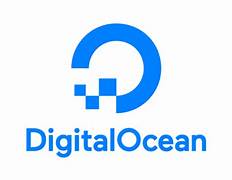Learn more about the DigitalOcean Kubernetes Autoscaling feature. Our DigitalOcean Support team is here to help you with your questions and concerns.
DigitalOcean Kubernetes Autoscaling | An Introduction
 Managing Kubernetes clusters can be complex. However, DigitalOcean Kubernetes makes it easier with its powerful autoscaling functionality.
Managing Kubernetes clusters can be complex. However, DigitalOcean Kubernetes makes it easier with its powerful autoscaling functionality.
This feature automatically adjusts the number of worker nodes in our cluster. This makes sure that we have the right amount of resources to handle our workloads while keeping costs in check.
Types of Autoscaling in DOKS
- Cluster Autoscaler (CA):
The Cluster Autoscaler is the primary autoscaling mechanism for DOKS clusters. It constantly monitors the number of unscheduled pods. In case there are too many pending pods, CA scales the cluster up. This is done by adding new worker nodes.
On the other hand, if there are excess nodes with idle resources for an extended period, CA scales the cluster down by removing nodes.
- Horizontal Pod Autoscaler (HPA):
The Horizontal Pod Autoscaler is a Kubernetes-native feature. It works with CA for more granular autoscaling based on pod resource utilization, like CPU and memory.
Furthermore, we can define specific metrics for our pods (e.g., CPU usage should not exceed 80%), and HPA automatically adjusts the number of pods running in a deployment to meet these metrics.
Benefits of Autoscaling
- Autoscaling lets us pay only for the resources we use. By dynamically scaling our cluster up and down based on demand, we can avoid the costs of running excess nodes.
- It makes sure our pods have enough resources to operate efficiently. This prevents performance issues caused by resource shortages.
- Furthermore, autoscaling automates the process of adjusting cluster size based on workload demands.
Enabling Autoscaling
- Cluster Autoscaler:
Autoscaling is enabled by default on new DOKS clusters. For existing clusters, we can enable or disable it via the DigitalOcean control panel or the doctl command-line tool.
- Horizontal Pod Autoscaler:
HPA requires manual configuration for each deployment where we want to enable autoscaling based on resource metrics. We can deploy an HPA resource YAML file in the cluster to define the desired scaling behavior.
[Need assistance with a different issue? Our team is available 24/7.]
Conclusion
With DigitalOcean’s autoscaling features, we can optimize resource usage, boost performance, and simplify the management of our Kubernetes clusters.
In brief, our Support Experts introduced us to the DigitalOcean Kubernetes Autoscaling feature.







0 Comments